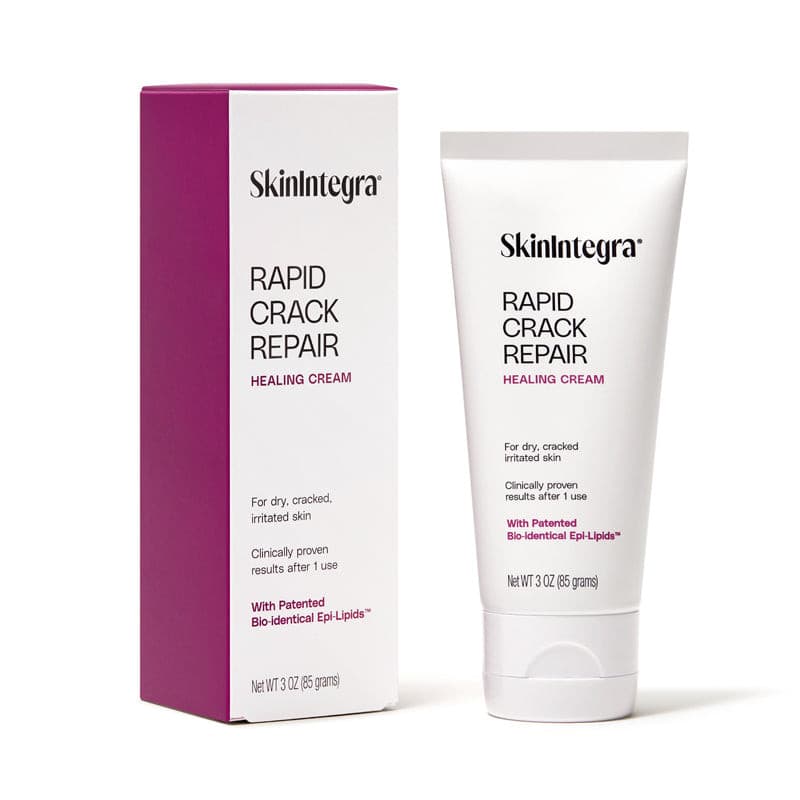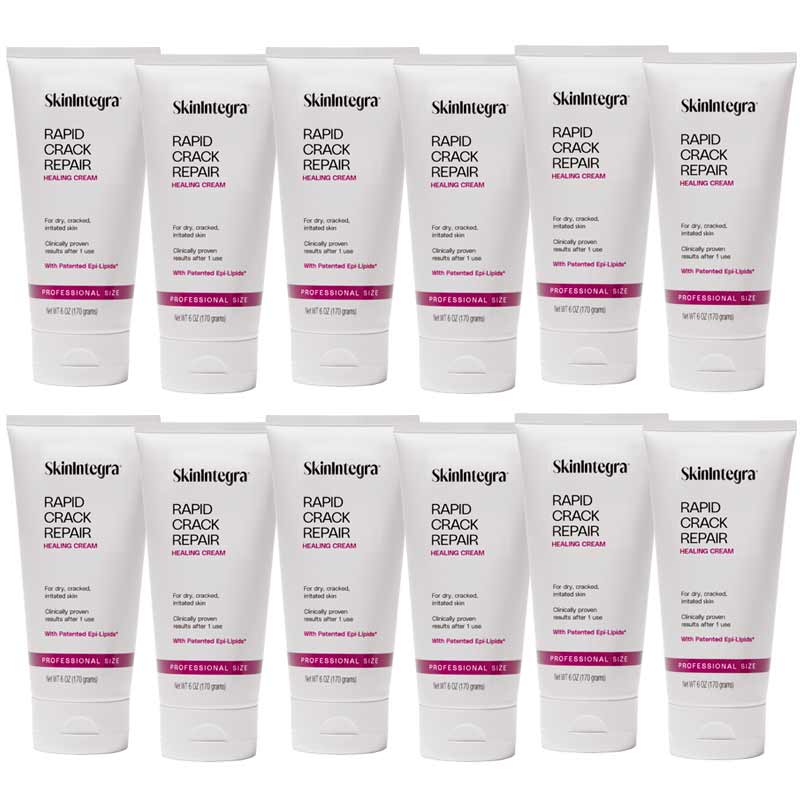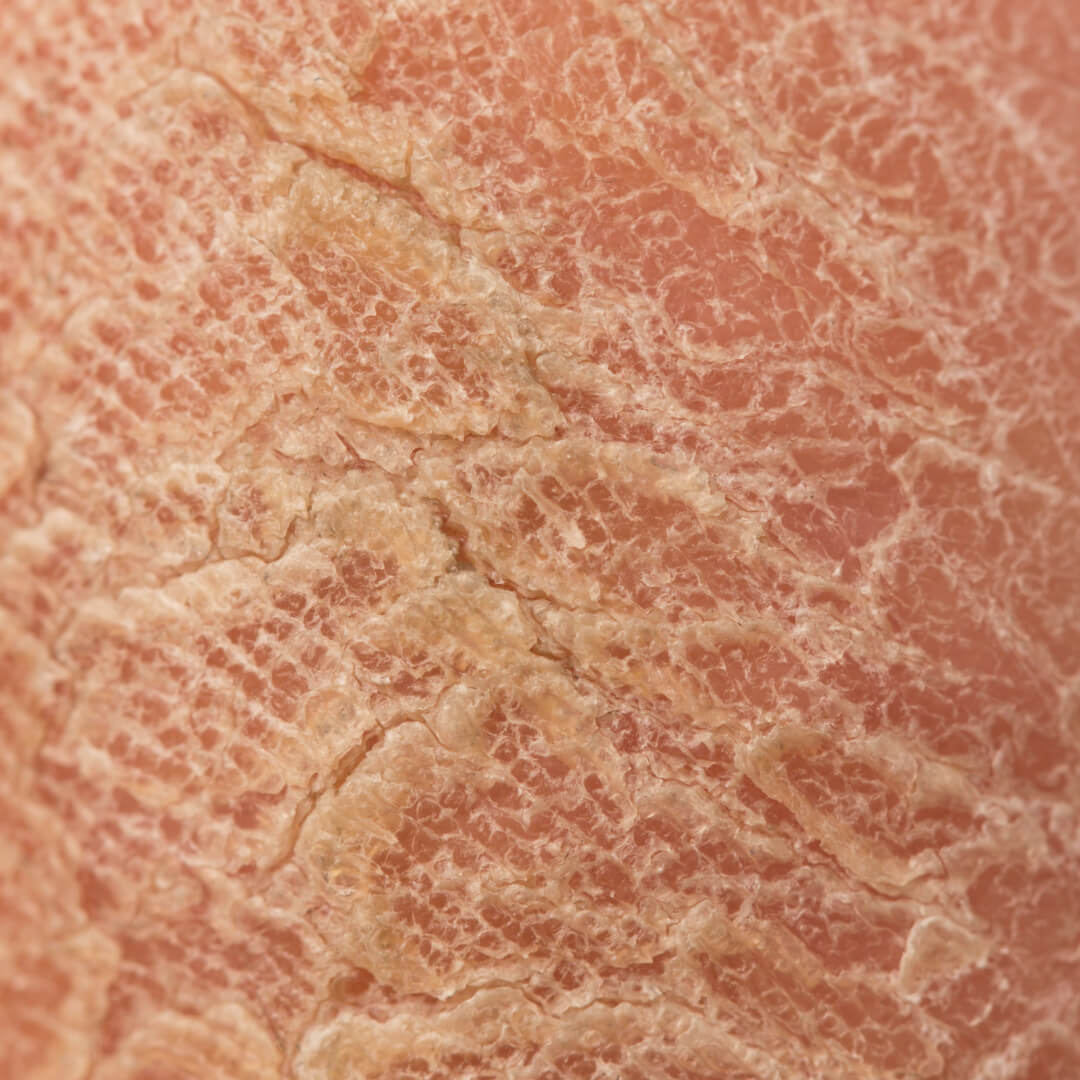Living with lymphedema means facing daily challenges—swelling, discomfort, and skin that feels stretched, dry, and unbearably itchy. When that skin begins to crack, leak, or peel, it’s not just uncomfortable; it’s a potential entry point for infection. This article explains why lymphedema skin is prone to dryness and cracking, how to recognize early signs of infection, and the best ways to care for and protect fragile skin before it breaks down.
Understanding Lymphedema and Why It Dries Out Your Skin
According to the Mayo Clinic, lymphedema occurs when lymph fluid builds up due to a damaged or blocked system. The swelling stretches the skin, reducing oxygen and nutrient delivery, and over time, the skin becomes thick, hard, and dry—a condition called hyperkeratosis. Chronic lymphedema may lead to folds, thickened patches, and a “pebbly” texture that can feel both fragile and stiff.
In advanced cases, lymph fluid may leak through the skin (lymphorrhea), which softens and damages the surrounding tissue. The combination of swelling, inflammation, and poor circulation leaves the skin dry, cracked, and highly vulnerable to bacteria. Even mild irritation can turn into infection if the barrier breaks.
Patient with lymphedema dry, cracked skin

Why Dry, Cracked Lymphedema Skin Is Dangerous
Cracked, itchy skin may seem minor, but for people with lymphedema it poses serious risk. Once the protective barrier breaks, bacteria can enter easily, leading to infections like cellulitis. Cellulitis can spread rapidly and cause severe illness if untreated. For those with compromised circulation or immune systems, early prevention is critical.
Learn more about cracked heels and nutritional deficiencies.
How Diabetes Makes It Worse
When diabetes and lymphedema occur together, the effects multiply:
-
Poor circulation reduces healing and hydration.
-
High blood sugar dries skin and weakens immunity.
-
Nerve damage (neuropathy) dulls sensation, hiding early injuries.
-
Weakened defenses make infection more likely.
Together, these factors create what clinicians call a “perfect storm” for skin breakdown: dryness, delayed healing, and a higher chance of infection.
The Unbearable Itch-Scratch Cycle
Itching is one of the most common—and destructive—symptoms of lymphedema. When the skin dries, tiny cracks trigger nerve irritation, leading to intense itching. Scratching, however, causes tears and further damage, starting an “itch-scratch” cycle that quickly escalates.
Common triggers include:
-
Sweat buildup under compression garments
-
Fungal or bacterial irritation in skin folds
-
Reaction to fragrances or detergents
-
Excessive dryness from harsh cleansers
How to Break the Cycle
-
Cool compresses: Apply a cool, damp cloth to soothe itchy skin.
-
Daily moisturization: Use a urea-based, fragrance-free barrier cream.
-
Keep nails short: Prevent damage from unconscious scratching.
-
Wear cotton gloves at night: Protect skin while sleeping.
-
Seek medical advice: Persistent itching may need topical steroids or antifungal treatment.
If itching continues despite moisturizing, it signals a deeper barrier issue—not a lack of cleanliness.
Recognizing the Warning Signs of Cellulitis
Once bacteria enter cracked skin, cellulitis can develop quickly. Watch for:
-
Redness, warmth, or dark discoloration (on darker skin, look for swelling or shininess)
-
Pain or tenderness
-
Rapid swelling
-
Fever or fatigue
If you suspect cellulitis, remove compression garments and seek medical attention immediately. Early antibiotic treatment can prevent severe infection and hospitalization.
What Not to Do When Caring for Lymphedema Skin
Even well-intentioned habits can worsen fragile skin. Avoid:
-
Scrubbing or exfoliating – causes micro-tears.
-
Hot showers or harsh soaps – strip natural oils.
-
Ignoring leaks or color changes – early infection signs.
-
Using alcohol-based or fragranced lotions – can irritate.
-
Applying compression over infected skin – traps bacteria.
- Don’t stay still for too long. Avoid sitting or standing with your legs hanging down for extended periods. Elevate your legs above heart level whenever possible to reduce swelling, and keep moving gently throughout the day. Even small movements help improve circulation and lymph flow, lowering the risk of skin stretching and tears.
- Don’t wear ill-fitting compression or shoes. Compression garments are essential, but if they’re too tight, wrinkled, or digging into your skin, they can cause sores and blisters. The same goes for shoes and socks that rub or constrict. Always ensure proper fit, and if you notice pressure marks or irritation, talk to your lymphedema specialist. Padding or liners can help protect fragile skin.
- Don’t cut calluses or cuticles yourself. Always have them treated by a trained professional. Self-trimming can easily cause nicks or open wounds that may lead to infection.
Explore why a medical pedicure is safer for diabetic skin.
And importantly, know that cellulitis can come back – once you’ve had it, you’re at higher risk for recurrence, so diligent skin care to prevent future cracks is crucial.
This is why preventative skin care is so important: keeping the skin moisturized and intact is your first line of defense against cellulitis. In fact, guidelines for lymphedema patients universally recommend keeping skin “healthy, unbroken, and well moisturised” to prevent cellulitis.
How to Care for Dry, Cracked Lymphedema Skin
1. Gentle Cleansing
Wash skin with lukewarm water and a mild, soap-free cleanser. Gently pat dry, especially between toes and in skin folds. Never rub or scrub. Avoid over-washing, which strips natural oils.
2. Moisturize Daily with a Barrier-Repair Cream
This is your skin’s most important daily defense. Moisturize twice a day, especially after cleansing while the skin is still slightly damp. Choose a fragrance-free, hypoallergenic cream or ointment (creams and ointments are better than lotions, which can contain more water and alcohol). Nighttime moisturizing is key: many specialists suggest applying your rich cream at night after removing compression garments. This allows ingredients to penetrate and not get rubbed off.
SkinIntegra Rapid Crack Repair Cream meets these criteria and is clinically proven to reduce roughness, hydrate cracked skin, and restore barrier function—without the stinging or irritation common in many other creams.
3. Protect and Cover Vulnerable Areas
Use non-adhesive dressings to cover open skin or lymphorrhea. Avoid tape that can tear fragile skin. Elevate limbs to reduce fluid pressure and use absorbent materials as needed. Check dressings at least once daily for signs of infection (increasing redness or pus).
4. Use Compression Carefully
Compression helps reduce swelling and improves circulation but should be used with care:
-
Avoid if there’s active infection
-
Ensure garments fit properly without folds or tight bands
-
Use liners under wraps to prevent friction
-
Moisturize regularly even under compression
-
Always follow up with your lymphedema therapist or doctor if the current compression is causing any skin irritation or seems ineffective.
5. Check Skin Daily
Use a mirror or ask for help inspecting your skin. Inspect feet, legs, and folds for redness, swelling, cracks, or sores. Early detection can prevent serious complications. The American Diabetes Association recommends daily inspection and moisturizing to prevent diabetic foot complications.
6. Prevent Damage
Wear soft, protective clothing and shoes. Avoid temperature extremes and prolonged sitting or standing with legs down. Manage blood sugar and stay hydrated.
Why Barrier-Repair Creams Like SkinIntegra Work
Regular moisturizers add hydration, but a barrier-repair cream goes a step further: it provides the skin with the actual components it’s missing and helps rebuild the damaged protective barrier. In the case of SkinIntegra, it’s formulated with ingredients targeted for fragile skin:
-
Urea (25%) and Lactic Acid: These components act as a potent combo to tackle the thick, scaly buildup while also drawing in moisture. Urea at 25% concentration is a well-known keratolytic and humectant – it gently dissolves hardened keratin (the dry scales) and hydrates the skin by holding water. Lactic acid, an AHA, also exfoliates lightly and locks in moisture. Together, they help soften rough skin and reduce calluses without any scrubbing. Importantly, this is a gentle exfoliation suitable for diabetic skin, unlike physical exfoliants which we avoid.
-
Omega-3 and Omega-6 Rich Oils: These plant-derived lipids mimic the natural fats in healthy skin’s outer layer. In lymphedema, the skin’s barrier is “leaky” and deficient in these lipids, so adding them helps seal in moisture and repair the barrier. Think of them as the “mortar” refilling the cracks between skin cells.
-
Shea Butter, Hyaluronic Acid, and Ceramides: These provide deep moisturization, itch relief and barrier reinforcement.
-
Fragrance-free, alcohol-free formula minimizes irritation. This is crucial because lymphedema skin is already inflamed; the last thing we want is a cream that stings or triggers contact dermatitis.
It’s trusted by podiatrists and dermatologists for fragile diabetic skin and is safe for use even around cracked or inflamed areas. A blinded clinical study with podiatrists found SkinIntegra’s cream provided faster relief of cracked skin than even a prescription-strength urea 40% cream.
By using a cream like SkinIntegra twice daily on your lymphedema-affected skin, you are actively working to restore the skin’s barrier. As the barrier function improves, the skin holds hydration better, which reduces itching and improves comfort. It’s not just about immediate relief (though the cream does soothe within minutes; it’s about gradually building the skin’s resilience so that it can withstand daily life without breaking down.
Frequently Asked Questions (FAQ)
Q: Can dry skin from lymphedema lead to cellulitis?
A: Yes. Cracks are open doors for infection. Consistent moisturizing and early treatment of skin changes can prevent it.
Q: How should I moisturize cracked lymphedema skin?
A: Apply a urea-based, fragrance-free barrier cream twice daily—especially after bathing—to damp skin. Massage gently, avoiding open wounds.
Q: Can I wear compression garments with cracked skin?
A: Only if the skin is intact. Pause use if there’s infection or fluid leakage.
Q: How can I stop severe itching?
A: Keep the skin hydrated, use cool compresses, and avoid scratching. Ask your provider about anti-itch or antifungal treatments if needed.
Q: What’s the best way to prevent cellulitis?
A: Consistent moisturizing, early treatment of cracks, and daily skin inspection are your best defenses. Protect skin from trauma and maintain compression once healed.
Takeaway: Prevention Is the Best Protection
Itchy, cracked lymphedema skin is more than a source of discomfort—it’s a sign that your skin barrier needs help. With gentle care, consistent moisturizing, and prompt attention to early changes, you can break the cycle of dryness, itching, and infection. Protecting your skin today helps prevent cellulitis and preserves your mobility and comfort for years to come.





